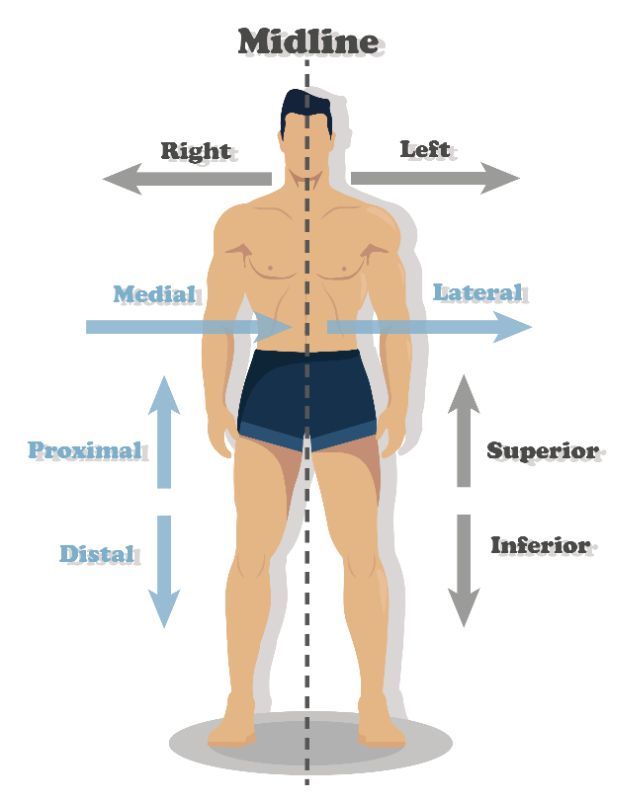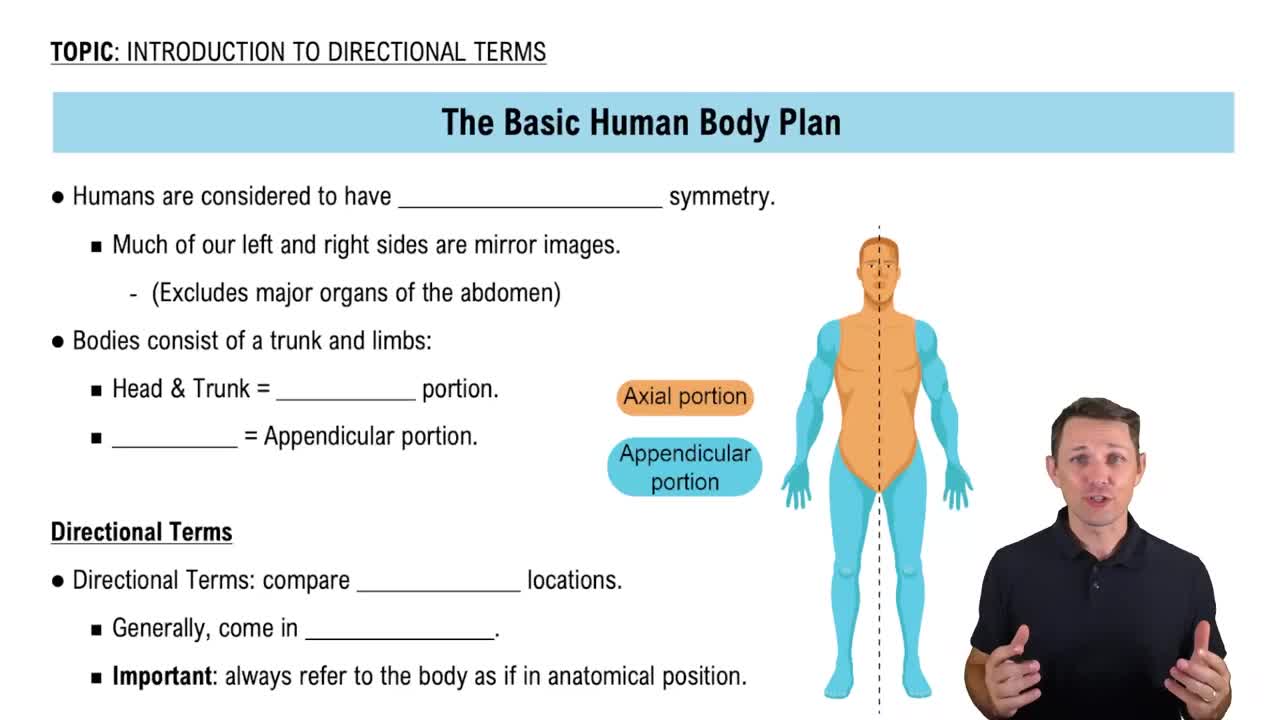Here are the essential concepts you must grasp in order to answer the question correctly.
Anatomical Terminology
Anatomical terminology is a standardized language used to describe the locations and relationships of body parts. It includes terms that specify positions, directions, and regions of the body, such as 'anterior' for front and 'posterior' for back. Understanding these terms is essential for accurately identifying and communicating about different body regions.
Recommended video:
Body Regions
Body regions refer to specific areas of the body that are identified by anatomical terms. For example, the 'arm' is referred to as the 'brachial' region, the 'thigh' as 'femoral', and the 'chest' as 'thoracic'. Recognizing these regions helps in understanding human anatomy and is crucial for medical professionals when diagnosing or treating conditions.
Recommended video:
The 9 Abdominopelvic Regions
Directional Terms
Directional terms are used to describe the position of one body part relative to another. Terms such as 'proximal' (closer to the trunk) and 'distal' (further from the trunk) are important for understanding limb anatomy. For instance, the fingers are 'distal' to the wrist, while the knee is 'proximal' to the ankle, aiding in precise anatomical descriptions.
Recommended video:
Introduction to Directional Terms
 Elaine N. Marieb, Katja Hoehn 7th Edition
Elaine N. Marieb, Katja Hoehn 7th Edition Ch. 1 The Human Body: An Orientation
Ch. 1 The Human Body: An Orientation Problem 13
Problem 13
 Verified step by step guidance
Verified step by step guidance


